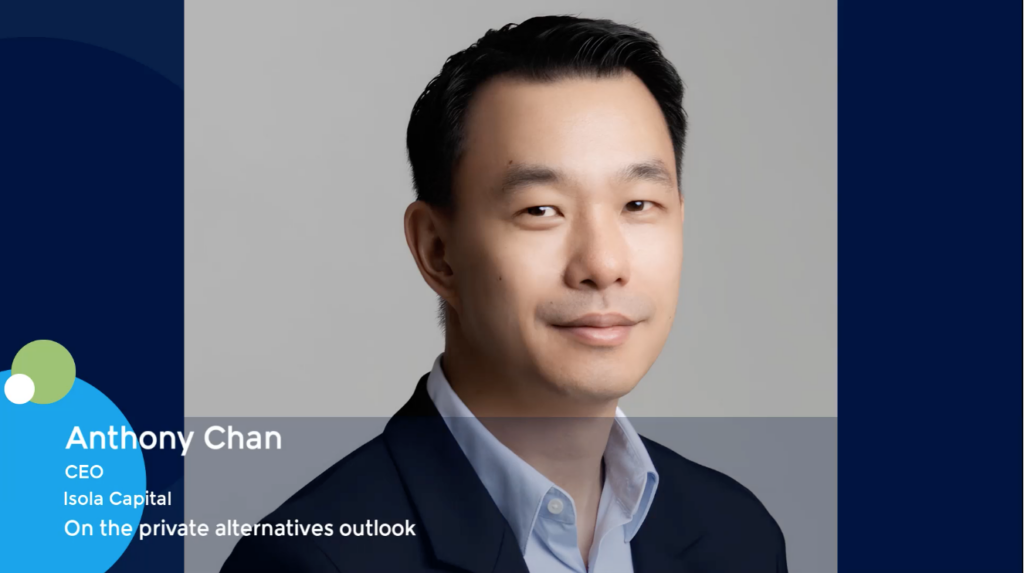Asia private equity 2023: Year in review
- Pan-regional players suffer amid fundraising malaise
- GPs explore sponsor-to-sponsor sales, continuation funds
- China’s future seems more renminbi than US dollar
- Japan drives Asia buyouts, but not where expected
- Manufacturing challenges tech’s sectoral pre-eminence
- Public markets propel India to summit of exits chart
1. Fundraising: Single-country funds trump pan-regional mandates
Eight large-cap pan-Asian buyout funds have been launched in the past three years, and five are still in the market. Bain Capital became the third to achieve a final close in November, having accumulated USD 7.1bn for its fifth regional fund. It followed The Blackstone Group and BPEA EQT, which completed their efforts in January and September of 2022.
PAG, TPG Capital, CVC Capital Partners, and The Carlyle Group have either extended their fundraising periods or reduced their target sizes. Some have done both. MBK Partners is a more recent entry, having launched Fund VI in July, seeking USD 7bn.
This overhang is a consequence of a difficult fundraising environment globally, yet Asia is being hit harder than other markets. Pan-regional funds, previously the beneficiaries of a flight to quality as LPs sought comfort in familiarity, have been drawn into the fray.
The pan-regional buyout total fluctuates based on how many of the handful of large-cap global or regional managers are in the market. In the five years to 2022, average annual commitments to pan-regional funds of USD 2bn or more reached USD 25.8bn. In 2018, when Asia fundraising – excluding renminbi vehicles – hit a record high of USD 119.2bn, two-thirds came from funds of USD 2bn-plus.
With Asia on course to post its lowest fundraising total in over a decade in 2023, large-cap funds have contributed USD 10.1bn – or 19% – out of USD 52.4bn. Smaller pan-regional players are feeling the bite as well. Their share is 15%, roughly half the average for the prior five years.
The easiest fundraises, relatively speaking, appear to be for single-country mandates. And LPs are finding comfort in Asia’s more developed markets, where there tends to be less exuberance-fuelled growth, more control, and a clearer path to exit.
Commitments to Japanese and Korean managers are down compared to 2022, but the percentage fall is not as large as for Asia as a whole. Australia is the outlier – down 81% – but last year’s total was abnormally high because of two large infrastructure funds. Remove 2022 from consideration and the picture is like Japan and Korea.
The largest closes of 2023 represent a mixture of geographies and strategies. Two China-focused managers, Primavera Capital Group and True Light Capital, occupy second and third place after Bain. Both have reason to defy the general China trend.
Primavera, which now pursues a broader geographic yet China-centric mandate, raised much of its USD 4bn before conditions deteriorated in early 2022 and extended its fundraising period. True Light’s USD 3.3bn for a similar China nexus strategy came on the back of support from its parent, Temasek Holdings. It is unclear how much external capital was raised.
The top 12 also include buyout and growth in Korea, India special situations and venture, Japan mid-market buyout, Southeast Asia venture, Asia growth, China venture, and a hybrid private equity-infrastructure strategy aimed at Australia and New Zealand.
Stretching the sample set to 50, there are only eight China representatives – low by historical standards. Japan leads the way with nine, while Australia and India have seven and five, respectively.
2. Exits: GPs look beyond trade sales, public markets
BPEA EQT bought corporate services provider Vistra eight years ago. Rather than let go of the business, it engineered a transfer from Funds V and VI to Fund VIII by merging Vistra with another portfolio company, Tricor Group. The merger created a combined entity worth USD 6.5bn, with co-investors coming in alongside Fund VIII and making a near-equal equity commitment.
The deal, which closed in July, is one of a string of transactions that have made sponsor-to-sponsor Asia’s predominant exit route in 2023. It also demonstrates how investors are being more creative around liquidity – thinking beyond the traditional yet challenging IPO and trade sale options.
Two of the region’s four largest exits have similar characteristics. Bain Capital secured a full exit for Fund IV through the sale of Japan’s Works Human Intelligence for JPY 350bn (USD 2.6bn). Following a competitive process, half the equity went to GIC and half was transferred to Bain’s fifth fund.
Meanwhile, TPG Capital sold its Fund VI position in India-based hospital operator Manipal Health Enterprises when Temasek Holdings paid INR 163bn (USD 1.99bn) to move from minority to majority ownership but then put in new capital from its eighth Asian fund.
Two single-asset continuation funds have also closed over the past 12 months, both in Australia’s mid-market space. Pacific Equity Partners won support from AlpInvest Partners for an AUD 400m (USD 268m) vehicle that extended its ownership of Up Education. Roc Partners and Ardian anchored a continuation fund of the same size for Crescent Capital Partners-backed Healthcare Australia.
In addition, there were multi-asset secondary transactions involving Samara Capital and Carpediem Capital in India, J-Star in Japan, and Capital Group Private Markets spinout Everbridge Partners and Capital Square Partners and Basil Technology Partners in South Asia. Finally, Coller Capital closed the first deal from its renminbi-denominated fund by supporting a Legend Capital-led transaction.
The motivations behind these secondary transactions varied – one was a tail-end restructuring, another was a merger driven by difficult fundraising conditions – but all amounted to liquidity solutions at a time when generating liquidity is far from straightforward.
Asia private equity exits fell from USD 118.8bn in 2021 to USD 81.1bn in 2022, and the running total for this year is a mere USD 37.9bn, according to AVCJ Research. Approximately 300 deals have been announced, compared to more than 500 in 2022. Much of the pain has been felt in trade sales, where transaction volume is down 70% at USD 12.6bn and deal count is down 40% at 165.
Tales of thwarted processes abound. For example, an AUD 3.75bn purchase of TPG-owned Greencross was abandoned last month when the buyer, Ebos, couldn’t generate enough investor interest in a public equity issue to support the deal. This would have been Asia’s largest trade sale. Instead, it is Japan’s Nichii Holdings, which Bain Capital has agreed to sell for USD 1.4bn after a two-year hold.
Of the 25 largest announced exits this year, Nichii Holdings is one of only seven trade sales. There is one IPO, and the rest are sponsor-to-sponsor sales. Transactions in which financial investors are on both sides of the deal hit a record USD 35.9bn in 2021. They have since declined – to USD 30.3bn in 2022 and USD 22.3bn for 2023 to date – but the drop-off is less marked than other channels.
The sponsor-to-sponsor share of Asia PE exits by dollar value was 37% last year. In 2023, it is 59%.
3. China: Technology decoupling promotes local GPs, local currency
Much of the early success of Chinese VC was built on cross-border affiliations with established US managers. Now they are being unpicked, the latest casualty of a US-China technology decoupling that encompasses restrictions on transfers of sensitive intellectual property and the gradual substitution of renminbi for US dollar funding.
Sequoia Capital was the first mover, announcing in June that its China and US entities would formally separate (with the China-Southeast Asia franchise also achieving independence). GGV Capital and BlueRun Ventures subsequently put out similar statements.
For GGV, it means dividing a single global operation in two, including a global fund; for BlueRun, which has been almost fully independent for several years, rebranding will suffice. Other firms plan to do nothing, seeing no problems in their setup or how it might impact their investment strategy.
Questions about the sustainability of US dollar investment strategies intensified with the issuance of a US executive order in August prohibiting outbound foreign investment in China that targets semiconductors and microelectronics, quantum computing, and artificial intelligence (AI).
Numerous industry participants believe it will be difficult to strike a balance between disclosure requirements under expected US legislation and China’s data security laws that preclude disclosure. GPs can either avoid sensitive areas – and it remains to be seen how broadly these will be defined – or unburden themselves of any associations that involve US oversight and compliance.
The notion of US-China separation, or renminbi for US dollar substitution, is underscored by prevailing investment trends. Private equity deployment in China has dropped sharply amid economic uncertainty and geopolitical tensions. It halved in 2022 and is down 42% this year at USD 38.4bn. Technology investment has fallen by a similar magnitude, but it remains the largest sector.
Moreover, the emphasis within the technology sector has shifted. Between 2014 and 2021, consumer internet accounted for 54% of all investment. Since 2022, this share has plummeted to 16%. Other segments have come to the fore, with semiconductors accounting for 47% in 2022 and 36% in 2023.
Cleantech and renewables – which includes the electric vehicle (EV) supply chain and AVCJ Research classifies separately to technology – has also become more significant. Its share of overall China investment reached double digits in 2022 and stands at 12%, or USD 4.6bn, for 2023 to date.
US dollar-denominated funds can play in these areas, but company founders – mindful of regulation and IPO prospects – often prefer renminbi. Of the 25 largest announced deals in China this year, 12 involved semiconductors, energy storage, EVs, photovoltaic technology, and AI. Almost all featured renminbi funds, many of them managed by state-linked managers.
One of these deals, a CNY 2bn (USD 273m) Series D for chip designer Enflame Technology, was led by Shanghai International Group. In earlier rounds, the company was backed by US dollar funds.
Several managers with track records in the US dollar fund space have responded by initiating or scaling up plans to raise renminbi. They have yet to make a meaningful impact on the space. Commitments to renminbi funds are USD 52.6bn to date, compared to USD 38.9bn for the full 12 months of 2022, but three government guidance funds account for 62% of the total.
US dollar fundraising, meanwhile, is incredibly weak. Approximately USD 11.5bn has been accumulated – the average for the prior five years is USD 22.5bn – across fewer than 20 closes. With many of the traditional LPs holding back for geopolitical reasons or because the risk-return doesn’t stack up, managers are scouring the globe for new sources of capital.
4. Japan: Big buyouts, concentrated deal flow
Japan is one of the few bright spots in Asian private equity. Region-wide, fundraising – excluding renminbi-denominated vehicles – is down 51% on the 12-month total for 2022, investment is down 38% and exits are down 53%. In Japan, however, fundraising trails last year’s total by a relatively small amount, while investment and exits are up 38% and 67%, according to AVCJ Research.
The country’s investment credentials attract the most attention. While every other major market in the region has seen a substantial drop-off in activity, Japan is at a record high of USD 37.2bn. China retains the top spot, a position it has held for over a decade, but the gap is only USD 1bn.
Japan’s 27% share of overall Asia deal flow is largely the work of three transactions: Toshiba Corporation (JPY 2trn, USD 15.9bn), JSR Corporation (JPY 989bn), and Works Human Intelligence (JPY 350bn). They make up three of the five largest investments announced region-wide; the other two are China’s Chindata and Fortune COFCO, each worth around USD 3bn.
These deals – three of five to surpass USD 1bn – makeup over two-thirds of all capital deployed in Japan. The market thins out thereafter, with nothing in the USD 500m-USD 999m bracket. In 2022, four USD 1bn-plus transactions accounted for 56% of overall investment, in part because they were joined by four in the USD 500m-USD 999m category. This compares to four and seven in 2021.
Progress has been stymied by a sizeable gap in seller and buyer expectations on pricing – and this hasn’t been helped by strong public markets causing sellers to reevaluate their positions.
Yet Toshiba, Works Human Intelligence, and JSR are striking in that they don’t conform to type. Large-cap interest in Japan is predicated on the willingness of domestic corporates to divest non-core assets, having recognised that return on equity should be prioritised above scale. Five of the eight investments of USD 1bn or more in 2021 and 2022 were carve-outs.
Toshiba, though it bears some of the hallmarks of a carve-out in that it involves rationalising numerous subsidiaries, is a take-private. The transaction – led by Japan Industrial Partners – is also to some extent unique, having arisen from a combination of a corporate governance scandal as well as financial challenges.
JSR is also a privatisation, but it is steeped in political sensitivity. JSR supplies a key material used in printed circuit board production and the US has encouraged Japan to impose tighter restrictions on exports of chip-making equipment to China as semiconductors become central to US-China tech tensions. JIC Capital, a unit of government-controlled Japan Investment Corporation, led the deal.
Finally, Works Human Intelligence comprised two themes: a cross-fund deal that enabled the owner, Bain Capital, to retain a 50% stake in the company; and a fund investor-turned-direct investor play as Singaporean sovereign wealth fund GIC acquired the other 50%.
One of the five USD 1bn-plus deals is a corporate carve-out of sorts: JIC Capital paid JPY 131.5bn for 20% of Hitachi Astemo as part of a restructuring that saw Hitachi cede majority control. More traditional carve-outs appear further down the list – though none would be considered large cap – alongside founder-succession transactions and an assortment of take-privates.
Unlike Toshiba and JSR, these deals are in the sub-USD 250m space. They point to a growing mid-market opportunity involving Japanese companies that trade below book value and have been instructed by the Tokyo Stock Exchange to remedy the situation. Going private is one option. About one-third of the Japan’s 30 largest investments from 2023 could feasibly fit this profile.
5. Sectors: Manufacturing closes the gap to technology
More capital trickles into Asian technology than any other sector, but the gap between first and second is the narrowest since consumer internet went mainstream in 2015. Electronics has emerged as the nearest challenger, largely because of industrial manufacturing carve-outs in Japan.
Technology investment peaked at USD 144.5bn in 2021 before collapsing to USD 73bn last year. The slide has continued in 2023 with USD 37.5bn deployed to date, according to AVCJ Research.
The rise of electronics began in 2017 as private equity got its first taste of Japanese divestments at scale, picking up parts of the semiconductor, consumer electronics, and automotive supply chain. Investment topped USD 10bn that year and has come in at an annual average of USD 13.9bn since then. The USD 23.7bn total for 2023 is skewed upwards by Toshiba, a USD 15.9bn take-private.
All these transactions ultimately involve manufacturing businesses. Investment across the electronics and manufacturing sectors combined is USD 37.1bn – within touching distance of technology. Healthcare is the other mainstay, with USD 17.1bn, but the valuation corrections in biotech have mirrored those in technology.
Early- and growth-stage deals were behind the technology boom. Both are down more than 50% year-on-year, continuing the declines seen in 2022. Deals of USD 1bn-plus have inevitably fallen away, with only one – a USD 2bn commitment to Shein, a Chinese fast-fashion e-commerce platform popular outside of China – announced this year. There were 11 in 2021 and three in 2022.
The sub-sector mix has become more diversified with semiconductor and artificial intelligence featuring more frequently in the 30 largest deals. Beyond that, the resilience of China growth-stage activity is striking. In 2021, the country accounted for 12 of the top 30. There were 11 entries from India, five from Southeast Asia, and one from South Korea.
There was little to separate China and India in 2022 with nine deals to eight, while Southeast Asia once again contributed five, and three came from Korea. For 2023 to date, China is on 13. India and Southeast Asia have fallen back to six and three, respectively, and Korea has four.
This is the “tourist capital” phenomenon writ large. China – and increasingly Korea as well – can rely on relatively deep pools of domestic capital to support start-ups as they scale. India and Southeast Asia cannot, leaving the growth-stage space to international investors, including crossover funds looking for alpha in private markets. Once conditions turned, these players made a fast exit.
6. IPOs: Public markets underpin India’s liquidity
Quadria Capital paid about USD 60m for 20% of Concord Biotech in 2016. When the Indian company listed in August, Quadria made a full exit via the IPO, taking all the INR 15.5bn (USD 185m) in proceeds from the offering.
The private equity firm pointed to a strong growth story – sales more than tripled during the ownership period – but the swift exit also speaks volumes for the pull of India’s public markets.
Private equity-backed IPOs in Asia remain a chiefly mainland China story: Chinese companies account for two-thirds of the 270 offerings year-to-date and nearly 90% of the USD 46.2bn in proceeds; and the bulk of that activity has been on the Star Market, A-share market, and Chinext.
India’s BSE Sensex Index, up 14.3% for the year, is not the best performer of Asia’s major markets. That honour goes to Japan’s Nikkei 225 Index. Neither can it claim the largest ex-China IPO. Of the 25 largest offerings, 23 took place on mainland exchanges. Japan and India contributed one each, with Kokusai Electric (JPY 108.3bn, USD 720m) edging out Mankind Pharma (INR 43.3bn, USD 519m).
Kokusai Electric, Japan’s largest IPO in five years, represents a significant windfall for KKR. The company was one part of Hitachi Kokusai Electric, which the private equity firm acquired for JPY 322bn (then USD 2.9bn) in 2017. The other part was shared with and ultimately sold to co-investors.
Hitachi Kokusai listed – after a trade sale exit collapsed in 2021 – with a market capitalisation of JPY 541.5bn (USD 3.7bn). KKR received all the IPO proceeds and retained a 43.9% stake.
India, however, achieved broader market traction. Kokusai Electric accounts for half the proceeds from all PE-backed IPOs in Japan. The country has no other representatives in the nearly 150 offerings region-wide that raised more than USD 100m. Mainland China is the runaway leader with about 130, and India ranks second with 10.
In the absence of bumper financial services and technology listings, India’s overall IPO proceeds – not just those involving private equity – are down by one-third on 2022. But the ability to make realisations at IPO and through post-lockup share sales has helped India become Asia’s leading geography for PE exits.
The country’s exit proceeds for 2023 to date exceed USD 11.3bn, according to AVCJ Research. Japan and South Korea are second and third with USD 7.3bn and USD 6.2bn. China was the dominant force for the best part of a decade through 2021 when it was overtaken by India. The country now languishes in fifth place on USD 4.4bn.
Sponsor-to-sponsor transactions have made a sizeable contribution to Indian exits, much like in other geographies. The public markets are a key differentiator, however, with more than USD 2.3bn in IPO proceeds and over twice that amount in block trades.
Mankind’s offering, which facilitated exits for ChrysCapital Partners and Capital International, was the trigger for increased IPO activity. There have been 47 main board listings in 2023, and of the around 20 featuring financial sponsors, nearly all came after Mankind’s market debut in March.
Several of the block trades involved technology start-ups that have listed domestically in the past two years, such as Nykaa, Paytm, and Delhivery. The biggest deals, however, were final exits from more traditional businesses: The Blackstone Group realised USD 600m on selling its remaining shares in Sona Comstar, while BPEA EQT departed Coforge with a more than USD 900m payout.





















